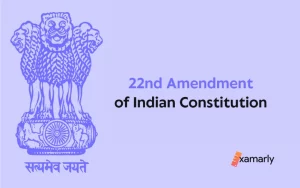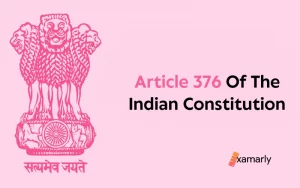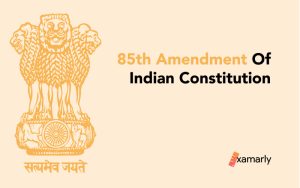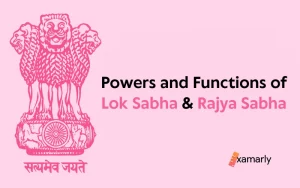The Lodi dynasty ruled Delhi for almost a century. Bahlol Lodi, the founder, was a ruler from 1451 to 1489. Sikandar Lodi was a renowned ruler of the Lodi dynasty. His birth name was Nizam Khan and Bahlul Khan Lodi was his father.
He was the second Sultan to take over the dynasty. He was a brilliant administrator as well as a great scholar. He expanded the Empire and restored the reputation of the Sultanate.
Sikandar Lodi reigned from 1489 to 1517 and was the most successful ruler of the Lodi Dynasty. At times, he is regarded as the greatest Lodi Sultan. He encouraged the building of roads, promoted trade, improved educational facilities, patronized Persian poetry, and constructed many roads.
Read this article further to discover more about him. Students preparing for the UPSC Exam will find this article worth reading. This is a part of Medieval Indian History covered under the UPSC Syllabus.
- Biography of Sikandar Lodi
- Ascension to the Throne
- Administration of the Empire
- Achievements
- The Conflict between Man Singh Tomar and Sikander Lodi
- Religion under Sikander Lodi
- Tomb of Sikandar Lodi
- Winding Up
- UPSC Previous Year Questions
- FAQs
- What was the achievement of Sikandar Lodi?
- Who was Sikander Lodi?
- Which city is founded by Sikandar Lodi?
- What is the other name of Sikandar Lodi?
- What did Sikandar Lodi do?
- Who defeated Sikander Lodhi?
- Who was the father of Sikandar Lodi?
- Write the characteristics of Sikander Lodi.
- Who had transferred the Capital of the Delhi Sultanate from Delhi to Agra?
- What was the pen name of Sikander Lodi?
- Which Sultan of the Lodi Dynasty removed zakat from foodgrains?
- Who wrote under the pen name of Gulrukhi?
- Who succeeded Sikandar Lodi?
Biography of Sikandar Lodi
Like his father, Sikandar Khan Lodi conquered and defeated rival nobility, restoring the prestige of the Sultan. He was a brilliant scholar and encouraged men to learn.
Before becoming the ruler, Sikandar Khan Lodi had considerable administrative experience. He reorganized the army, increased the efficiency of government institutions, and reformed the finances of provincial governments.
The growth of trade, economic prosperity, and agriculture flourished during his reign.
Sikandar Lodi’s military skill allowed him to suppress revolts and strengthen his authority. He was a patron of the arts as well as translated important works of Ayurveda. Besides, he built many significant buildings.
Sikandar Lodi was the second of three rulers of the Lodi dynasty. He ascended to the throne following his father, Bahlul Lodhi, who died on 12 July 1489 CE. Sikandar Khan Lodi took the throne of power on July 17, 1489, CE. His reign spanned the Lodhi Kingdom and he proved to be a successful ruler.
Sikandar Lodi, a successful ruler, died in 1517 and his burial tomb is in Delhi. The tomb was built by his son Ibrahim Khan Lodi, after his death in 1517 CE. It is now popular as Lodhi Gardens at Lodhi Road in the present Mughal of Delhi.
Sikandar Lodi, a poet and author of many Persian poems as well as a book of Persian poetry, was also known under his surname “Gulrukhi”. Besides the contributions to the nation’s culture, Sikandar Lodi’s effort to promote education for children of the Muslim community is appreciable.
Ascension to the Throne
The question of succession of the throne was heaped with the last breaths of Bahlol Lodi. Several rivalry groups came into action.
One of the groups was rigid with the motive to enthrone Sikandar Shah. But other comparatively stronger groups were against Sikandar, only for the reason that he was the son of a goldsmith’s daughter.
These groups were determined to enthrone the eldest son of sultan Barbaq Shah. They tried to part Sikandar from his father while Bahlul Lodi was counting his last breaths. But a major mistake of Sikandar’s cousin led to a clear decision. On July 17, 1489, Sikandar Lodi took over the throne.
Sikandar Lodi’s ascent to the throne marked the establishment and transfer of Delhi as the capital and the creation of Agra city.
Administration of the Empire
- Sikandar Lodi was a man of power and an appreciable administrator.
- To confirm the effectiveness of temporary governors, extensive research was done during his reign.
- Under his leadership, the records of numerous officials were rigorously reviewed. And theft offenses were severely punished.
- Like Balban, he generally upheld the honor of his position and avoided casual social interaction with the populace.
- A competent framework of covert operations was maintained. It helped to keep tight control over the disobedient governors, nobility, and other uncivilized members of the state.
- To ensure efficient exchange and transport, numerous new roads were constructed.
- Effective measures were taken to guard them against thieves, crimes, and cheats.
- He never gave a low-born individual a high position. The needs of the underprivileged were completely upheld.
- With careful organization and administration, Sikandar Lodi ran the entire realm.
Achievements
The most significant, efficient, and ablest ruler of the Lodi Dynasty is Sultan Sikandar Lodi. His accomplishments have won him numerous honors from historians.
In addition to being a capable military commander, he was a brave and kind king who was able to put down uprisings and increase the Sultanate’s power.
- He was a brilliant administrator who supported agriculture and trade in addition to being a renowned scholar. He introduced proper auditing of revenue and expenditure and punished embezzlement. Mubarak Khan Lodi, one of his viziers, was responsible for Jaunpur’s collection of revenue.
- By including Jaunpur, Chanderi, Dholpur, and Gwalior, he enhanced the reign of his power. He successfully maintained control over the rogue boss and the recalcitrant governors.
- Sikandar was a strong proponent of equity as well.
- He listened to the poorest of the poor’s problems and made an unbiased decision.
- He was also in charge of establishing Agra City. Agra too developed into a key metropolis under Mughal control.
- He promoted education, especially among Afghan nobility children, to instill a culture in them and made mosques educational institutions.
- He appointed a religious preacher, as well as a teacher, in each mosque. He had world-renowned scholars come to his country to lecture on his subjects.
- He was a strong advocate for both writing and craftsmanship.
- He was a brilliant scholar who could produce beautiful Persian verse.
- He was a brilliant scholar who could produce beautiful Persian verse. He was able to recall several crucial details thanks to his strong memory.
- By translating outstanding Sanskrit writings into Persian, he helped the literate.
The Conflict between Man Singh Tomar and Sikander Lodi
Sikandar Lodi was an excellent ruler of Delhi who had a prolonged dispute with Man Singh Tomar, another prominent ruler of Delhi. Born to Raja Kalyanmall, the Tomar Rajput ruler of Gwalior, Maharaja Man Singh Tomar ruled for over 30 years.
During his years, the Tomar often had conflicts and alliances with the sultans of Delhi.
Man Singh Tomar decided to dodge a war by delivering Bahlul Lodi 800,000 tankas (coins). Later, when Sikandar Lodi took over the throne following Bahlul Lodi, he dealt with Man Singh Tomar.
Further in 1500, Manasimha was found involved in a plot to dethrone Sikander Lodi. The Sultan wanted to retaliate against Manasimha, and extend his territory. Hence, he established a penal journey against Gwalior.
Even after continuous efforts, he failed to take over the Gwalior fort. Thus he captured the smaller forts surrounding Gwalior. Sikander Lodi’s war against Gwalior proved to be a costly venture.
It also saw the loss of Narwar’s subsidiary fortress. Lodi’s persistent campaign continued to hammer away at the ancient forts of Gwalior. Eventually, they encircled Gwalior. The siege continued for several more years, as the Lodi troops were not armed by artillery.
After the continuous efforts of Sikandar Lodi, things changed at his death, and in 1516, Ibrahim Lodhi laid siege on the fort. Man Singh died while the siege was on but his son held on to the fort for one year before surrendering.
Religion under Sikander Lodi
The Lodi Emperors were devout Muslims who, similar to their ancestors who came before them, acknowledged the preeminent position held by the Abbasid Caliphate in the Muslim world.
Sikandar Khan Lodi defined his Islamic credentials as per stringent Sunni orthodoxy irrespective of the fact that his mother, Bibi Ambha, was a Hindu.
He tore down some Indian buildings after being persuaded to do so by the ulama, and he was extremely brutal toward those who resisted his rule.
Furthermore, he barred:
- females to attend the annual procession of the spear of the famous Muslim martyr Salar Masud and
- to visit any of the Mazars (mausoleums) of Muslim saints.
In smaller towns and villages before Sikandar, justice was administered by local officials, and the Sultan often sought the counsel of scholars of Islamic law (sharia).
Sikandar’s creation of sharia courts gave the qazis more opportunities to impose the law on larger populations in various locations.
In spite of the fact that they were formed in regions with significant Muslim inhabitants, these courts can be utilized by non-Muslims for non-religious matters like property conflicts.
Tomb of Sikandar Lodi
The tomb of Sikandar Lodi can be found in the Indian city of New Delhi’s Lodhi Gardens. It was built between 1517 and 1518 CE and is managed by the Archaeological Survey of India. After Sikander Lodi’s death, Ibrahim Lodi, the son, built this memorial to bury him in the tomb.
The Tomb of Sikandar Lodhi, a unique and architecturally fascinating tomb, is a piece of art and architectural efficiency. It is partly inspired by Muhammad Shah’s tomb. It is the first enclosed tomb in a garden in the ancient city of the Indian subcontinent with high boundary walls and tall arches.
It is within a massive fort surrounded by beautiful gardens and lush flora, with a tall dome that resembles the top of a double-story structure. The Lodi Gardens is located near the Panipat tehsil office, which is named after him.
Relatable Articles:
Winding Up
Sikandar Lodi was one of the most significant of the Lodi Sultans, with good administrative skills. He was a great conqueror who attempted to preserve the enormity of the city of Delhi. With exceptional execution and rule, he built a strong empire during his reign and improved the economy of the Lodi dynasty.
He passed away in 1517. Further, the throne was taken over by his son Ibrahim Lodi. Ibrahim Lodi ruled India from 1517 to 1526 AD and was the last Sultan. He was a courageous ruler and faced many rebels during his time in power.
He was eventually overthrown at Panipat’s First Battle of Panipat when Babur, a Mughal ruler, overthrew him.
UPSC Previous Year Questions
Q1. Which one of the following is the correct chronological order of the Afghan rules to the throne of Delhi? (UPSC 2006)
a) Sikandar Shah-Ibrahim Lodi-Bahlol Khan Lodi
b) Sikandar Shah-Bahlol Khan Lodi-Ibrahim Lodi
c) Bahlol Khan Lodi-Sikandar Shah-Ibrahim Lodi
d) Bahlol Khan Lodi-Ibrahim Lodi-Sikandar Shah
Ans. (c) Bahlol Khan Lodi-Sikandar Shah-Ibrahim Lodi
Explanation: Bahlol Lodi ruled the Delhi Sultanate from the year 1451 to 1489. Next who ruled the Delhi Empire under the Lodi Dynasty was Sikandar Lodi. After the demise of his father, Bahlol Lodi, he sit on the throne in 1489 and ruled it till 1517.
Following the death of Sikandar Lodi, his youngest son Ibrahim Lodi wear the crown in the year 1517 and hold the power till 1526 AD. He was the last sultan of the Lodi Dynasty.
Relatable post: Delhi Sultanate Questions And Answers For UPSC
FAQs
What was the achievement of Sikandar Lodi?
Sikandar Lodi was a great conqueror who sought to preserve the vastness of the Delhi Sultanate. He expanded his sphere of influence by including key territories such as Jaunpur, Chanderi, Dholpur, and Gwalior. He was successful in maintaining control over rogue rulers and rebellious governors. Sikandar was known for his commitment to fairness, as he personally listened to the problems of the poorest citizens and made unbiased decisions. He was also a strong supporter of the arts, promoting writing and craftsmanship. He founded the city of Agra, which was renowned for its beautiful architecture. Sikandar was a well-educated man, fluent in Persian poetry, and had a strong memory for important details. By translating significant Sanskrit writings into Persian, he contributed to the spread of education.
Who was Sikander Lodi?
Sikandar Lodi, also known as Nizam Khan, was the second Sultan of the Lodi dynasty in India. He ruled from 1489 to 1517 and is remembered for his military conquests, administrative reforms, cultural achievements, and religious tolerance. He is widely regarded as one of India’s most important historical figures, known for his efforts to preserve the vastness of the Delhi Sultanate and expand his sphere of influence. He is also remembered for his commitment to fairness, his support of the arts, and his contributions to education.
Which city is founded by Sikandar Lodi?
Sikandar Lodi is remembered for founding the city of Agra. The second sultan of the Lodi Dynasty made this city the new capital of the Delhi Sultanate, replacing Delhi.
What is the other name of Sikandar Lodi?
Sikandar Lodi was formerly known by his real name, Nizam Khan.
What did Sikandar Lodi do?
Sikandar Khan Lodi was an effective leader who encouraged trade within his realm. He made it possible for Lodi to rule over Gwalior and Bihar.He reached an agreement with Alauddin Hussain Shah and his Bengali realm. In 1503, he issued the directive to build the present-day city of Agra.
Who defeated Sikander Lodhi?
Raja Man Singh Tomar was victorious over Sikander Lodi. He lost the battle while trying to control Gwalior.
Who was the father of Sikandar Lodi?
The father of Sikandar Lodi was Bahlul Khan Lodi. Bahlul Khan Lodi was the founder of the Lodi dynasty in India and ruled as the first Sultan of Delhi from 1451 to 1489. He was a successful military leader and consolidator of power, who established the Lodi dynasty as a major force in northern India. His son, Sikandar Lodi, succeeded him as the second Sultan of Delhi and continued the legacy of the Lodi dynasty, leaving a lasting impact on Indian history through his military conquests, cultural achievements, and administrative reforms.
Write the characteristics of Sikander Lodi.
Sikandar Lodi was a great conqueror, great administrator, lover of justice, and patron of art. He expanded the Delhi Sultanate, maintained control, advocated fairness, supported the arts, founded Agra, and was a brilliant scholar and poet.
Who had transferred the Capital of the Delhi Sultanate from Delhi to Agra?
Sikandar Lodhi, a monarch of the Lodhi dynasty, moved the capital from Delhi to Agra during the Delhi Sultanate.
What was the pen name of Sikander Lodi?
Sikandar Lodi, the second Sultan of the Lodi dynasty, wrote under the pen name of “Gulrukhi”. Sultan Sikandar Lodi had a passion for literature and poetry, and he penned 130 verses under the said pen name. These verses were written in the Persian language.
Which Sultan of the Lodi Dynasty removed zakat from foodgrains?
From 1489 to 1517 AD, Sikandar Khan Lodi ruled as Sultan of Delhi. He was a laborious, kind, and fair leader. As a result of a momentary scarcity of maize, he did away with the Zakat on grain, and no future Sultan revived it either. Throughout his reign, the costs of all necessities remained low.
Who wrote under the pen name of Gulrukhi?
Under the pen name Gulrukhi, Sikandar Lodi composed poetry. Nizam khan Sikandar Lodi was his real name. Sikandar Lodi is quite proficient in Persian.
Who succeeded Sikandar Lodi?
Ibrahim Lodi, son of Sikandar Lodi, succeeded his father in 1517 and became the last emperor to govern the Lodi Dynasty.






